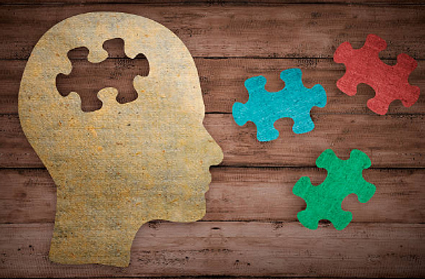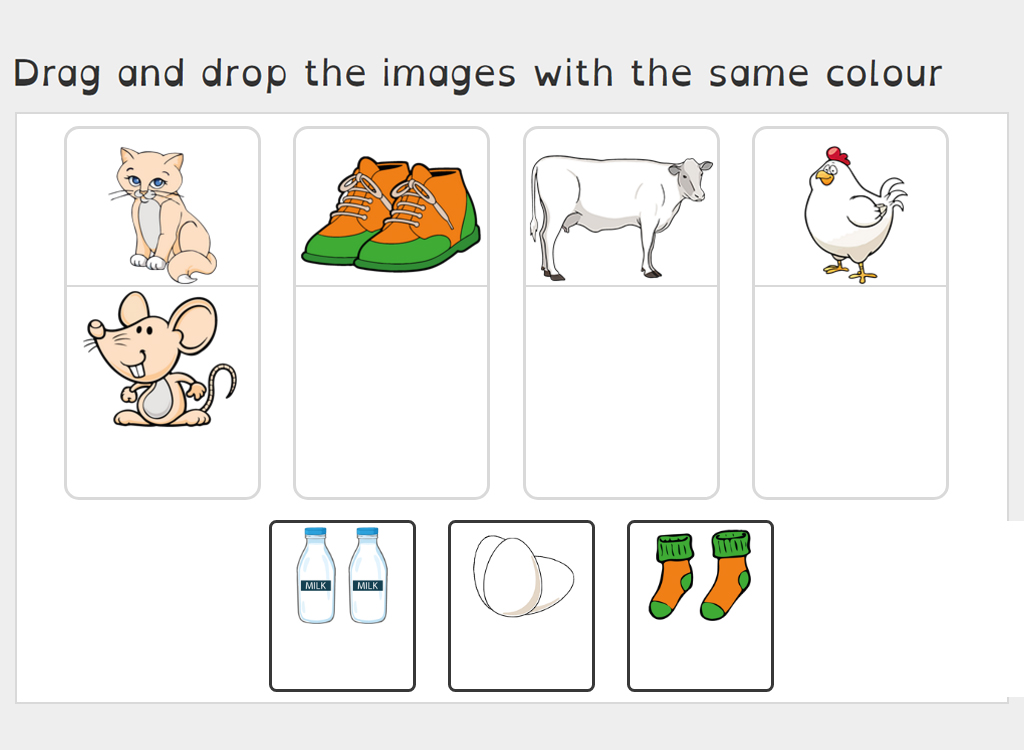Matching Game

This activity has two objectives. One is matching objects with the same colour. The other objective is to make the child understand the relationship between two objects- cow and milk, bat and ball, table and chair etc. If you find the child has difficulty in identifying colours then go to the activity “Identifying Colours”.

The child is provided with two categories of objects, where he/she has to drag one set of objects to the match the other set. The two sets are matched based on the colour of the objects and their relation with the other object.
Tips for Parents:
These exercises test the existing knowledge of the child. These trigger the information, knowledge, association and relationship between words and images already stored in the child’s brain.These exercises test what the child already knows and are also an exercise on how quickly the child can recall associations and relationships.
When you teach a lesson to your child ask two questions. Before you start the lesson ask the child: “What do you know about the topic?” Allow her/him to tell you what she/he knows about the subject or anything related to it. This activity brings out the existing knowledge.
After you finish teaching the lesson, ask the child the second question: “What new information/knowledge have you gained?”Allow her/him to explain in as much detail as possible what is added to the existing knowledge. These activities serve as a quick recap (revision) of what is learnt. Recalling the existing knowledge and narrating what is added, help the child to store the new information properly in the long term memory (LTM). Children do well in examinations when they store what they have learnt in the LTM.
Storing information in LTM is one aspect of efficient learning. The other aspect is to speed up the recall ability.
How to trigger the existing knowledge? How to improve the recall ability?
- Ask questions:
The questions can be about anything. It can be about the shops in the town. Or questions like what did we have for breakfast yesterday? Or “Which shirt you wore when we went to the market the other day? “ The questions need not be always related to what is learnt in school. You can ask, Name three animals taller than a fox or name three not so common colours, names of cars, names of shops in your area, or “Which building is next to the post office?, etc.
- Questions based on visual information:
You and your child would be regularly visiting a variety of places: shopping centres, grocery or vegetable stores, places of worship, bus stops, railway station, etc. Ask the child to close her/his eyes and visualize a particular place. Then ask him/her to narrate in as much detail as possible what are found in the particular place. You can ask questions about the place and let the child answer the questions, eyes closed. The next time the child visits the place, the brain would automatically take note of more details. You can also ask your child to close eyes and then see in mind the lesson she/he has recently learnt. Encourage your child to tell you about the title of the lesson, headings and subheadings, about pictures and figures, etc.
Repeated activities in A and B above are excellent ways to make the child improve the observation skills and store information effectively.
- Written activities:
You can do a variety of written activities.
Ask the child to write words. You can specify the length of words. Say 3, 4, 5, 6 or 7 letter words.Give only 5 minutes to write these words. How many can your child write? As the days progress, you can see the improvement in the recall ability of your child.
Another variation is to ask the child to write letters with starting with a particular alphabet. Ask the child to write words starting with s or p. Give only 5 minutes. Continue this activity with other alphabets.
Another variation is to give two letters of the alphabet say words starting with sp, tr, pr etc. Also you ask your child to write double letter words – baffle, balloon, attack.
A still another variation would be to write words ending with a letter ( p,k,l,e,g ) or words ending with two letters( nd, nk, ed,,st, etc)
Our brain is like a computer.Information is stored in many places in our brain. When we start writing words starting with say s, the information stored in many places are opened and revisited. The brain will “open so many files” to see words starting with the letter s.Without our knowledge so many activities are going on in the brain.
You can search in the internet to get a list of words with initial and final blends.
The internet offers plenty of matching games. Search the net for matching games for kids.

